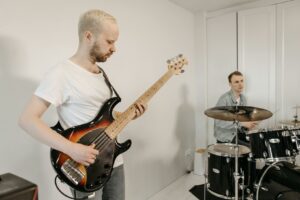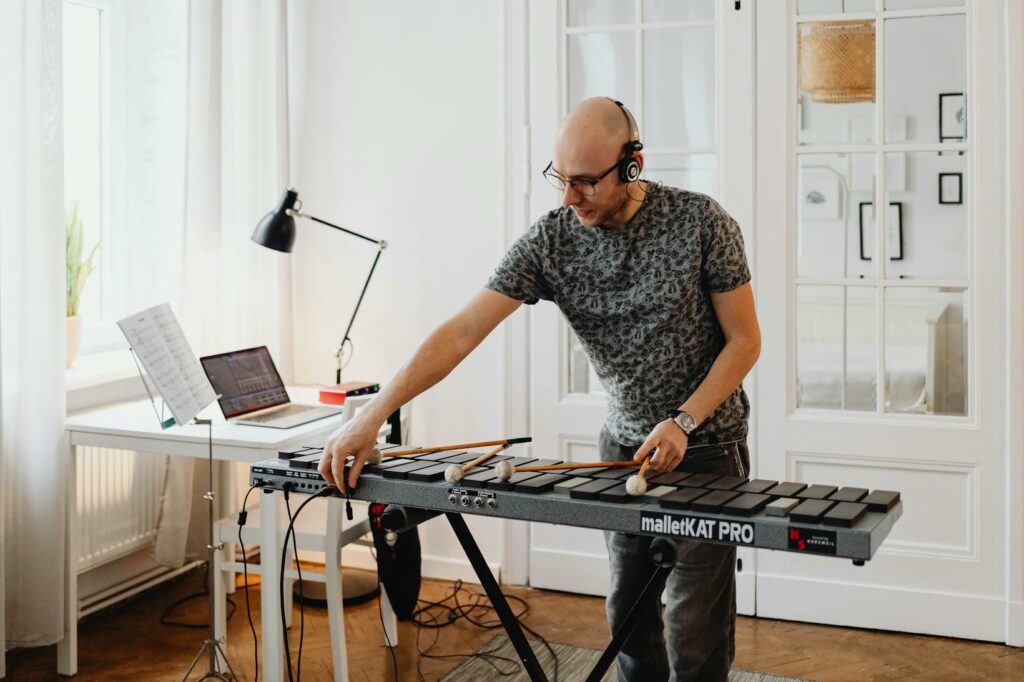In today’s digital age, the allure of creating music from the comfort of one’s home has never been stronger. Home music studios have become a sought-after haven for musicians, producers, and hobbyists alike, offering a personalized space to explore creativity without the constraints of traditional studio settings. As technology continues to advance, setting up a functional and efficient home studio is more accessible than ever.
From budding artists to seasoned professionals, anyone can transform a spare room or even a corner of their living space into a music-making sanctuary. With the right equipment and a bit of know-how, home studios can rival commercial ones, providing quality sound production and endless creative possibilities.
Home Music Studios

Home music studios have surged in popularity due to accessible technology and evolving music production software. Artists now enjoy creating high-quality music from home, resulting in a democratized production landscape. Key advancements in digital audio workstations (DAWs) have enabled seamless integration with home setups, reducing dependency on traditional studios.
Affordable equipment and software have empowered a wide range of users, from novices to professionals. A basic setup typically includes a computer, an audio interface, a microphone, and monitors. Optional enhancements like MIDI controllers and soundproofing solutions further enhance the space.
Musicians benefit from flexibility and independence, working at their own pace without booking constraints found in professional environments. This freedom encourages innovation and experimentation, leading to unique sounds and creative approaches to music production. Home studios also offer cost efficiency, as initial investments often yield long-term savings compared to recurring professional studio fees.
Essential Equipment for Home Music Studios
A home music studio requires key equipment to achieve high-quality sound production. Essential tools include an audio interface, studio monitors, and a digital audio workstation (DAW).
Audio Interface

An audio interface is crucial for converting analog signals to digital form, allowing seamless recording and playback. It connects instruments and microphones to a computer, enhancing sound quality. Popular choices include Focusrite Scarlett and PreSonus AudioBox, known for their reliability and flexibility at various price points. Selecting a model with low latency and multiple inputs ensures versatile recording options.
Studio Monitors
Studio monitors provide accurate sound representation, distinct from regular speakers, which may color the sound. They enable precise mixing and mastering by delivering unaltered audio. Models like the Yamaha HS series and KRK Rokit are favored by home studio enthusiasts due to their balanced sound output. Positioning monitors away from walls and at ear level optimizes sound clarity.
Digital Audio Workstation (DAW)
A DAW is software used to record, edit, and produce music. It acts as the creative hub for composing and arranging tracks. Leading DAWs like Ableton Live, Logic Pro, and Pro Tools offer varied features catering to different music styles and preferences. Compatibility with audio interfaces and ease of use are crucial factors when choosing the right DAW for a home studio.
Designing Your Home Music Studio
Creating an effective home music studio demands careful attention to acoustics and layout. These elements profoundly influence sound quality and overall workflow efficiency.
Acoustic Treatment

Acoustic treatment enhances sound clarity by reducing echo and controlling the reflections within a room. Proper treatment includes bass traps, diffusers, and absorptive panels. Bass traps target low-frequency sound waves in corners, minimizing bass resonance. Diffusers scatter sound waves, creating a balanced sound field. Absorptive panels, made from materials like foam or fiberglass, mitigate mid to high-frequency reflections. Employing these tools strategically ensures recordings and mixes have accuracy and detail.
Room Layout
Room layout impacts accessibility and ergonomics in a home music studio. Centralize the listening position, ideally forming an equilateral triangle with the studio monitors to establish an optimal sound field. Position monitors away from walls to prevent sound reflections from distorting the audio perception. Arrange equipment, such as computers, audio interfaces, and MIDI controllers, within easy reach to streamline the creative process. A well-organized layout not only enhances comfort but also boosts productivity and concentration during music creation.
Modern Music-Making

Home music studios have revolutionized the way artists create and produce music. With the right tools and setup, musicians can achieve professional-quality sound from the comfort of their homes. The accessibility of technology and affordable equipment has opened doors for creativity and innovation, empowering artists to explore new musical possibilities. By investing in essential equipment and optimizing their space, individuals can enjoy a productive and inspiring environment for music production.

